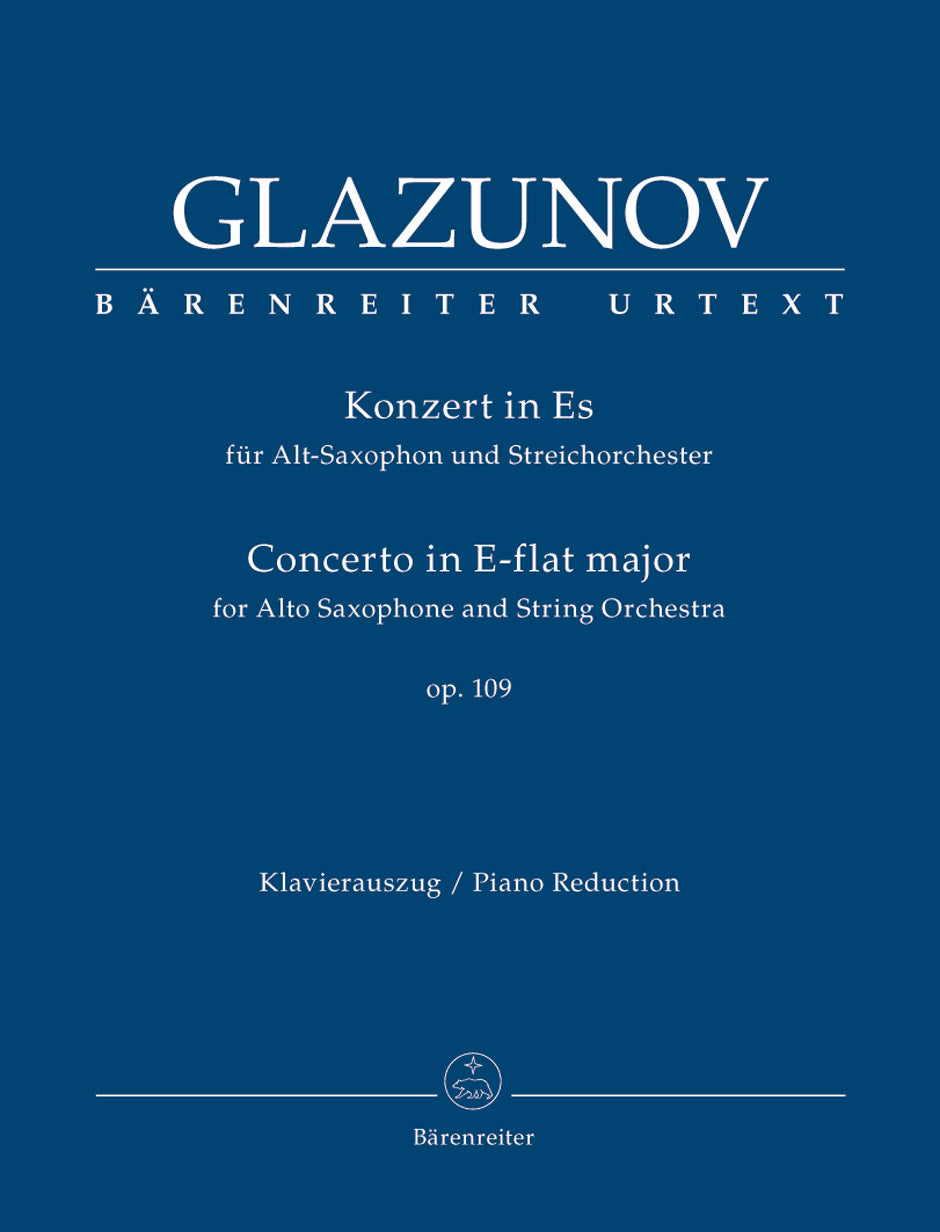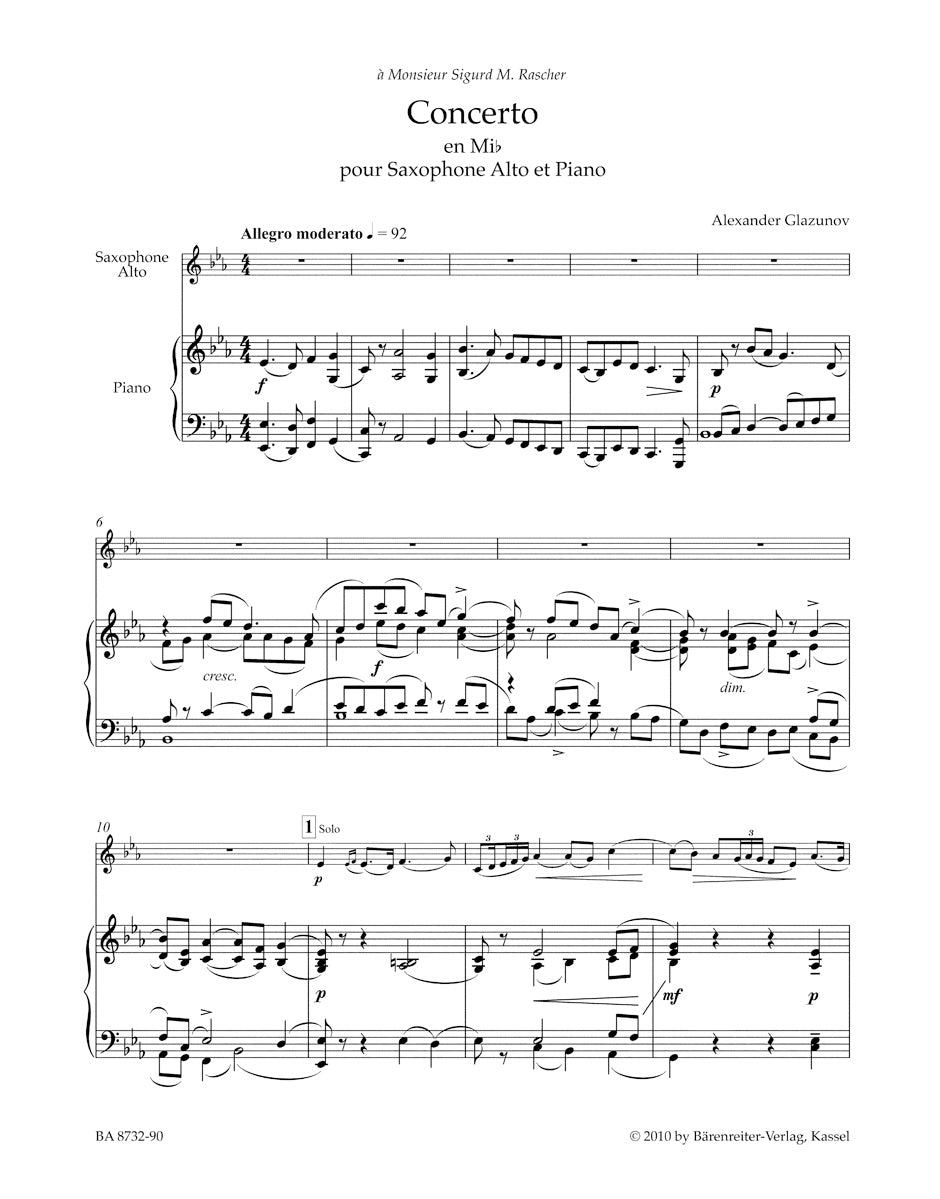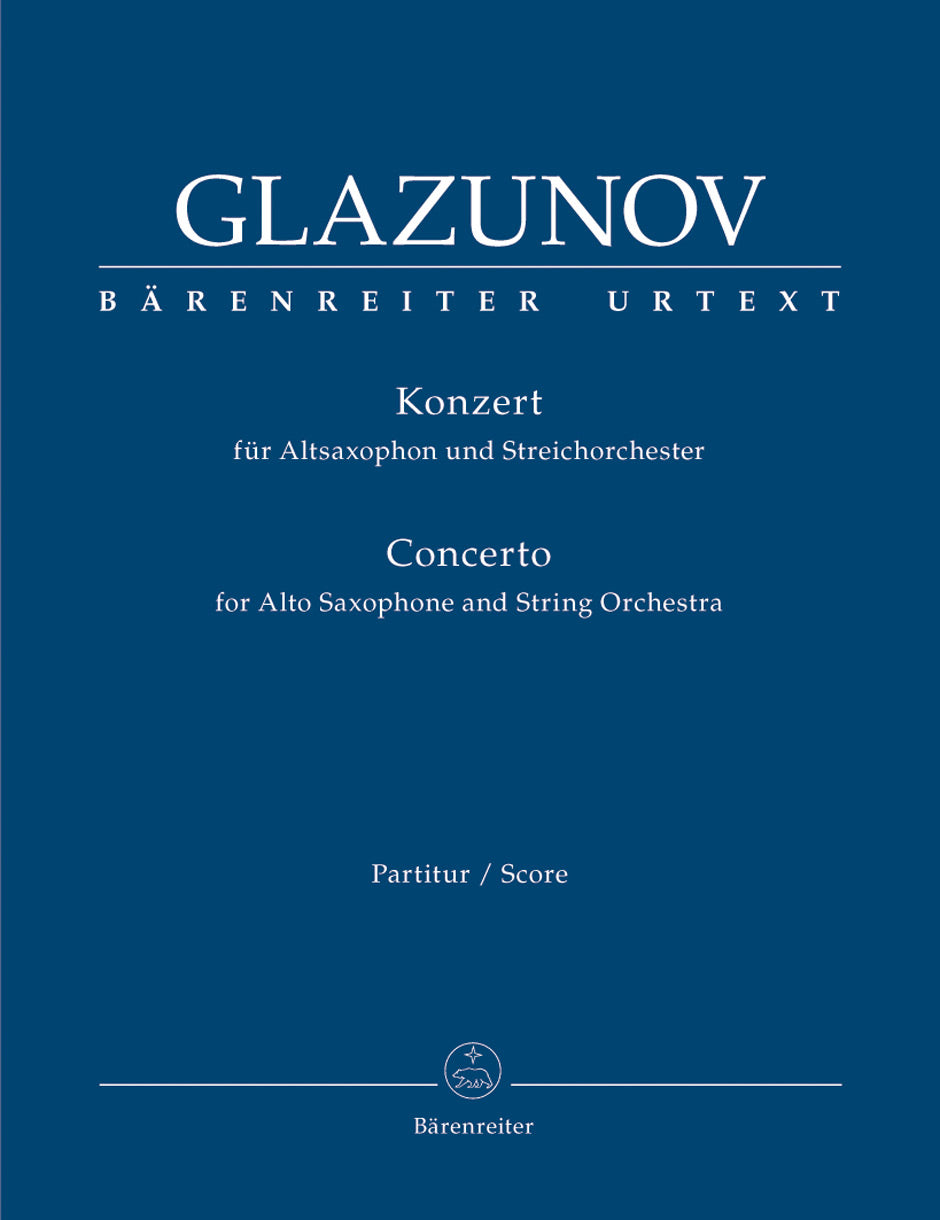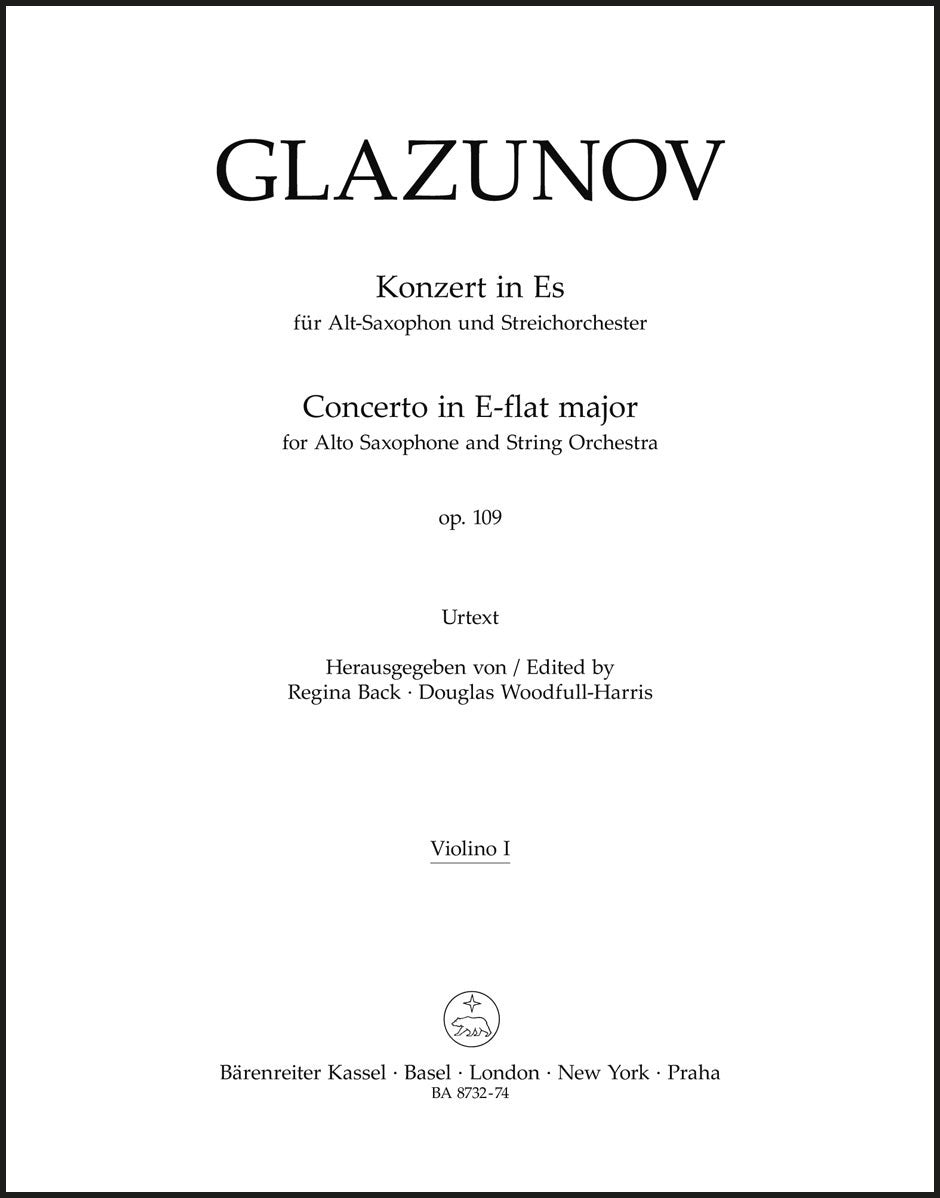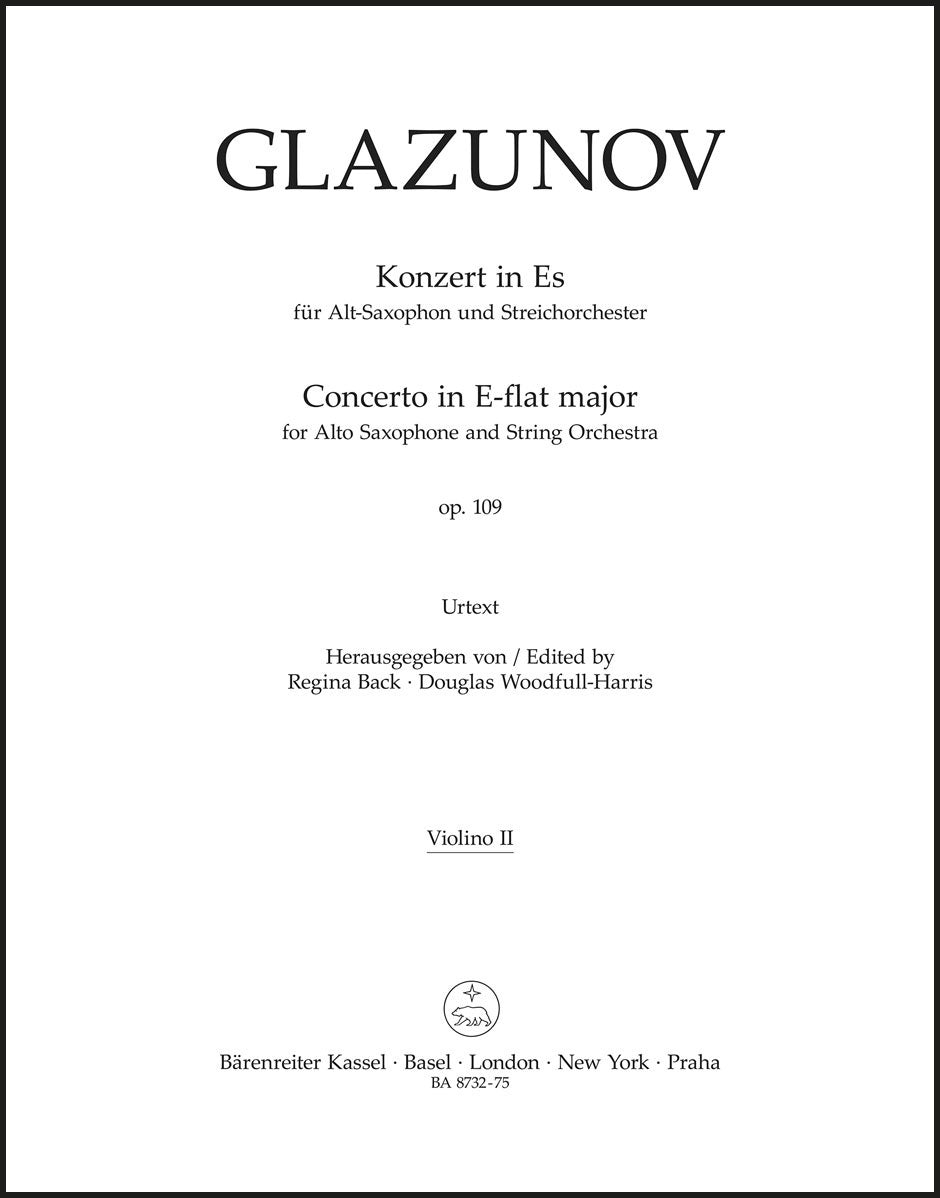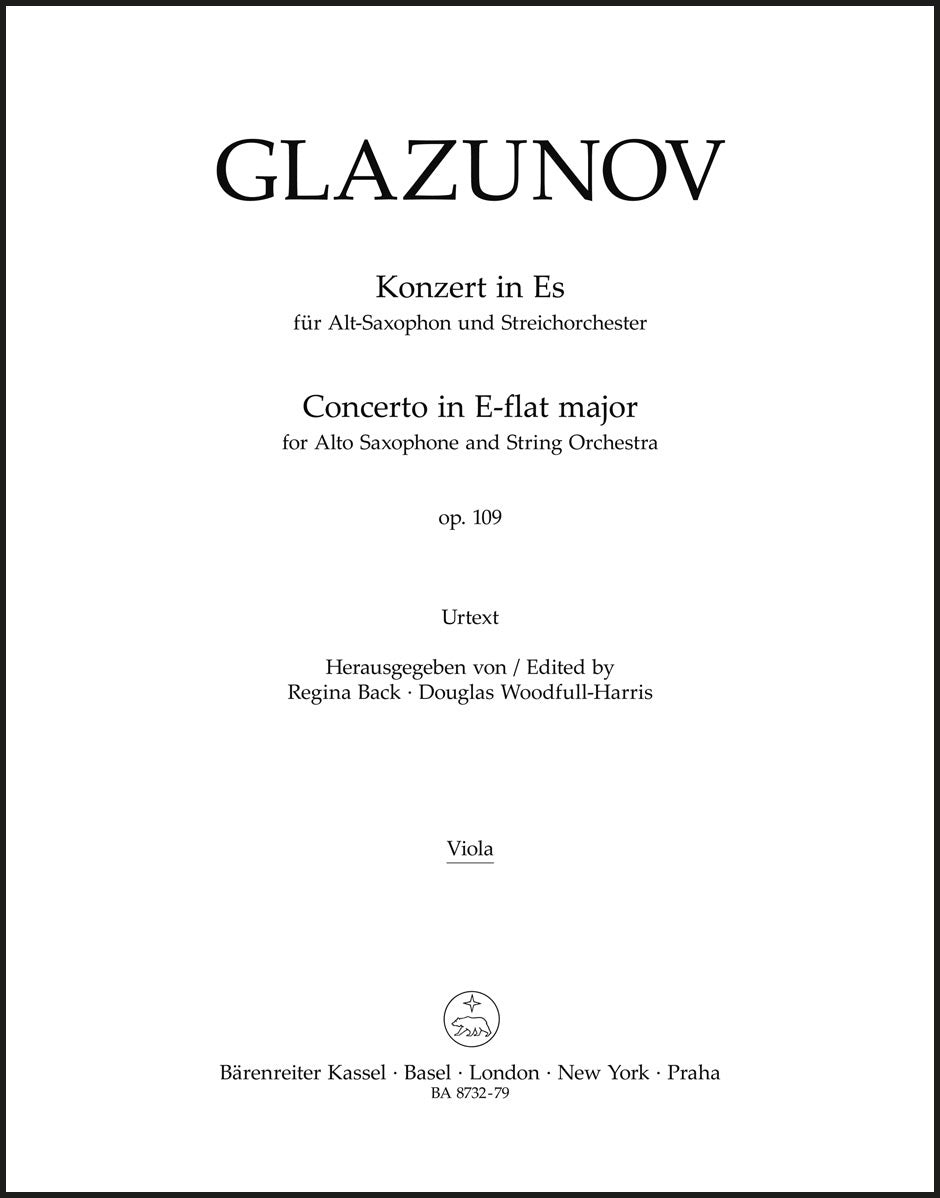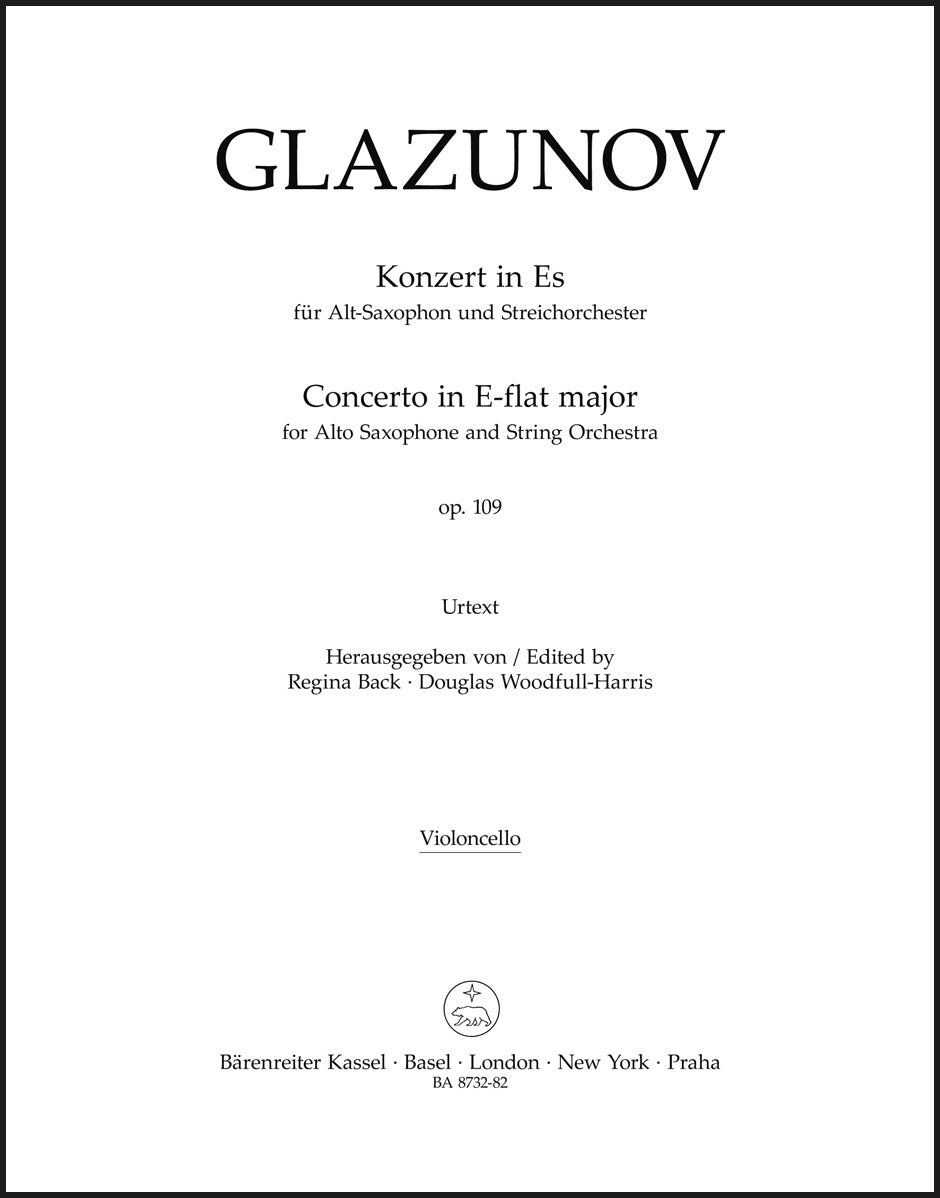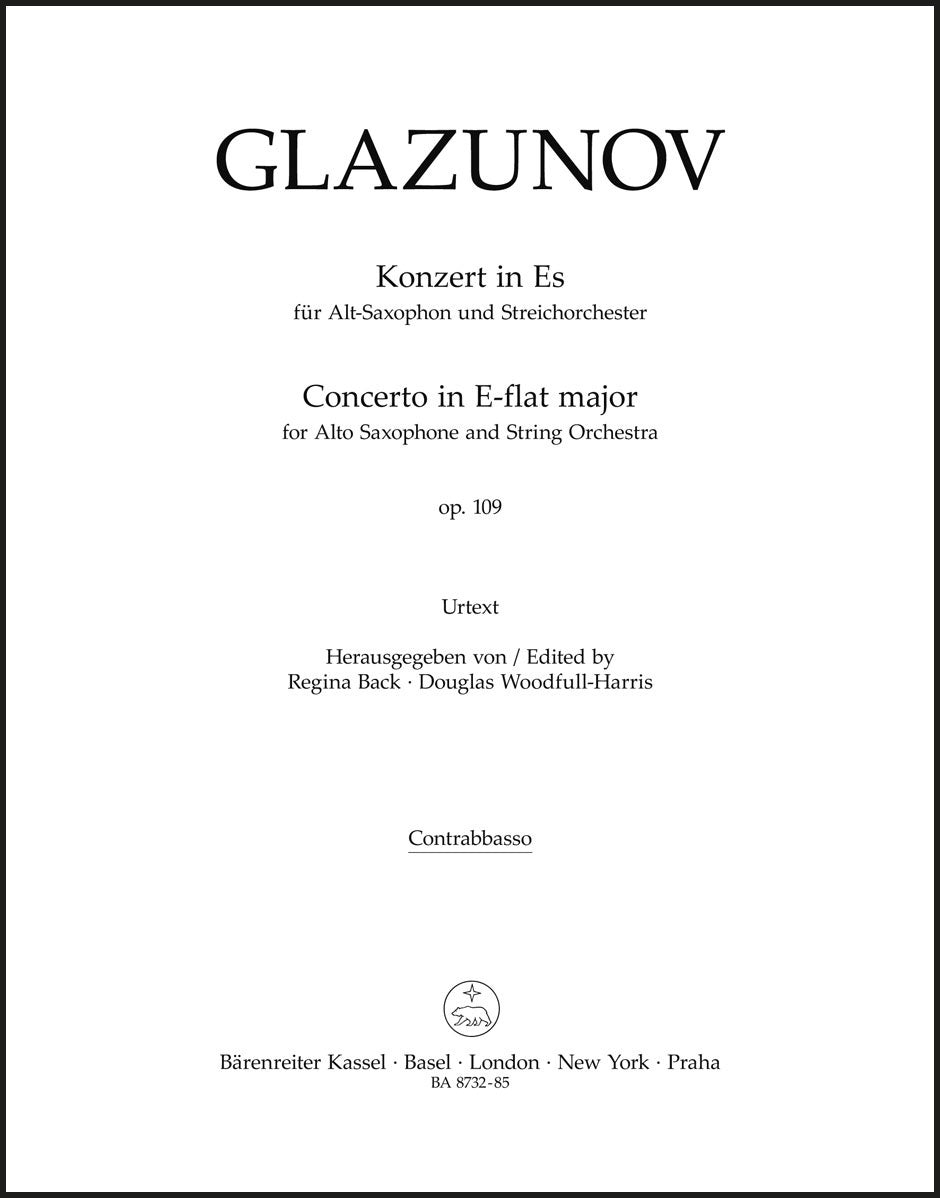Glazunov: Alto Saxophone Concerto in E-flat Major, Op. 109
In stock and typically ships within 1 business day.
- Composer: Alexander Glazunov (1865-1936)
- Editors: Regina Back, Douglas Woodfull-Harris
- Piano reduction: Martin Schelhaas
- Instrumentation (this edition): Piano Reduction, Alto Saxophone
- Originally for: Alto Saxophone, String Orchestra
- Work: Alto Saxophone Concerto in E-flat Major, Op. 109
- ISMN:
- Size: 9.6 x 12.2 inches
- Pages: 44
- Urtext / Critical Edition
Description
The Concerto for Alto Saxophone and Orchestra is Alexander Glazunov's last work; since its first performance in 1934 it has become part of the standard saxophone repertoire. The sole surviving autograph manuscript is the hand-written dedication score given by Glazunov to Sigurd Raschèr (Raschèr was the founder and leader of the well-known and innovative Raschèr Saxophone Quartet).
This score contains the original version of the work without the alterations which were made in the proofs to the orchestral score as well as the full version of the composers cadenza which was later shortened. The autograph manuscript also contains some performance markings by Raschèr.
The correspondence between Raschèr and Glazunov documents the composer's thoughts on the work and his recommendations about the size of the accompanying string orchestra. Evidence from this correspondence has been integrated into this edition.
The solo part includes both the complete and the shortened version of the cadenza as well as a cadenza by Raschèr which the composer authorized.
Publishers use a lot of words to describe what they sell, and we know it can be confusing. We've tried to be as clear as possible to make sure you get exactly what you are looking for. Below are descriptions of the terms that we use to describe the various formats that music often comes in.
Choral Score
A score for vocalists that only contains the vocal lines. The instrumental parts are not there for reference. Generally, cheaper than a vocal score and requires multiple copies for purchase.
Facsimile
Reproductions of the original hand-written scores from the composer.
Full Score
For ensemble music, this indicates that the edition contains all parts on a single system (there are not separate parts for each player). In larger ensembles, this is for the conductor.
Hardcover
Hardbound. Generally either linen-covered or half-leather.
Orchestral Parts
Similar to a wind set, this is a collection of parts. In the case of strings, the numbers listed are the number of copies included, though generally these are available individually (often with minimum quantities required).
Paperback
When publishers offer multiple bindings (e.g. hardcover) or study scores, this is the "standard" version. If you're planning to play the music, this is probably what you want.
Performance / Playing Score
A score of the music containing all parts on one system, intended for players to share. There are not separate parts for each player.
Set of Parts
For ensemble music, this indicates that there are separate individual parts for each player.
Solo Part with Piano Reduction
For solo pieces with orchestra, this is a version that contains a piano reduction of the orchestra parts. For piano pieces, two copies are typically needed for performance.
Study Score
A small (think choral size) copy of the complete score meant for studying, and not playing. They make great add-ons when learning concertos and small chamber works.
Vocal Score
A score prepared for vocalists that includes the piano/organ part or a reduction of the instrumental parts.
Wind Set
For orchestral music, this is a collection of wind and percussion parts. The specific quantities of each instrument are notated.
With Audio
In addition to the printed music, the edition contains recordings of the pieces. This may be an included CD, or access to files on the internet.
With / Without Fingering (Markings)
Some publishers prepare two copies - a pure Urtext edition that includes no fingering (or bowing) suggestions and a lightly edited version that includes a minimal number of editorial markings.

